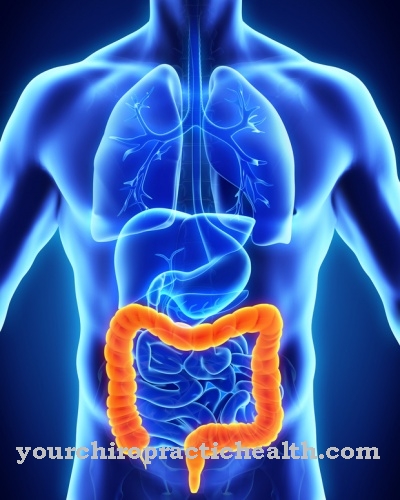In medicine one understands by one smear the removal of endogenous substances that are on the surface of mucous membranes or on wounds.
What is a smear?

Such a smear is then examined in the laboratory in further steps. Depending on the type of smear, different methods are used for this purpose: For example, the material taken from a smear can be applied to a culture medium on which any pathogens it may contain form a culture.
In addition, the material can also be applied and fixed to a glass carrier. After coloring the corresponding smear, the body's own material can then be evaluated under a microscope. Various instruments can be used to collect a smear. These instruments include, for example, small spatulas or brushes, but also sterile cotton swabs.
Function, effect & goal
A is applied smear in medicine, for example, in the form of a so-called cytological smear (also known as a cell smear) or in the form of a microbiological smear. If a cytological smear is carried out, certain cells from the body are removed.
Such a smear can, for example, help rule out tumors or detect cancer at an early stage. The analysis of removed cells is usually carried out under a microscope. Special microscopes such as the so-called phase contrast microscope are mostly used for this purpose.
A microbiological smear is used, for example, in gynecology (gynecology) for early cancer detection. The smear is also called a Pap smear or a gynecological portio smear. A swab can also be taken from the bronchi for the early detection of lung cancer.
A microbiological smear can, for example, be used to identify the sources of infection. For this purpose, material is removed from a wound with a cotton swab, for example. Once the pathogens at a source of infection have been identified in more detail, targeted therapy (e.g. by administering antibiotics) is possible.
A microbiological smear can also serve other purposes: If, for example, mucous membrane cells are removed from the oral cavity, the DNA of a corresponding person can be extracted from them. Such a smear is used, for example, when paternity is to be proven or parentage reports are to be drawn up or when a genetic fingerprint is carried out. A microbiological smear can also be used for various types of typing.
Parts of the body from which a smear is taken comparatively often are, for example, wounds that only heal slowly. This is often the case with diabetics. The throat is also an area of the body that is often swabbed. Here, a smear is used, for example, to confirm diseases such as purulent angina. In gynecology, a smear is usually taken in the form of secretions from the vagina or in the form of cells from the cervix. Among other things, a smear of vaginal secretions can confirm a fungal infection or other infections.
Risks & dangers
Usually are with one smear very rarely associated with dangers. For example, if a swab is taken from the cervix in women, light spotting may occur in exceptional cases. However, this bleeding is usually harmless and subsides on its own after a short time.
In addition to the fact that a smear is largely risk-free, a corresponding smear is usually also painless. However, depending on which culture a woman comes from, it is possible that the patient in question will first have to overcome a shame barrier when taking a gynecological smear. However, this is not related to the smear.
Occasionally, a smear may have the risk of having to repeat it. This is the case, among other things, if insufficient amounts of the body's own material have been removed or if there are laboratory difficulties during the preparation of the material.
In the case of a smear used for early cancer detection, there is also a low risk that a result determined in the laboratory is flawed. For example, so-called 'false positive' test results sometimes occur. This is the case when a smear is considered suspicious, although the patient in question is healthy.



























